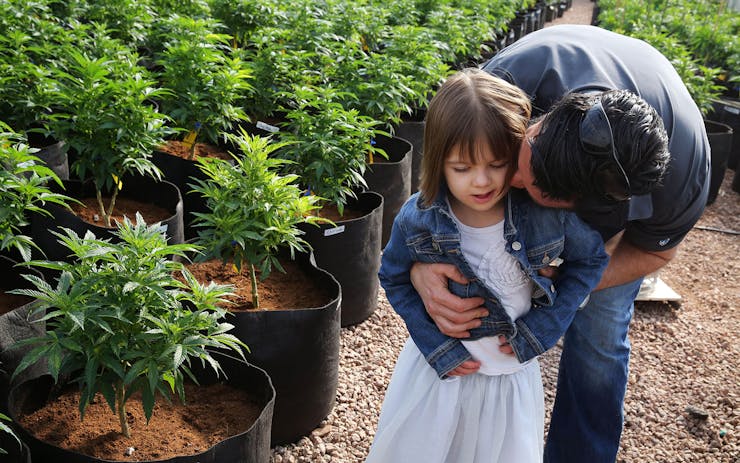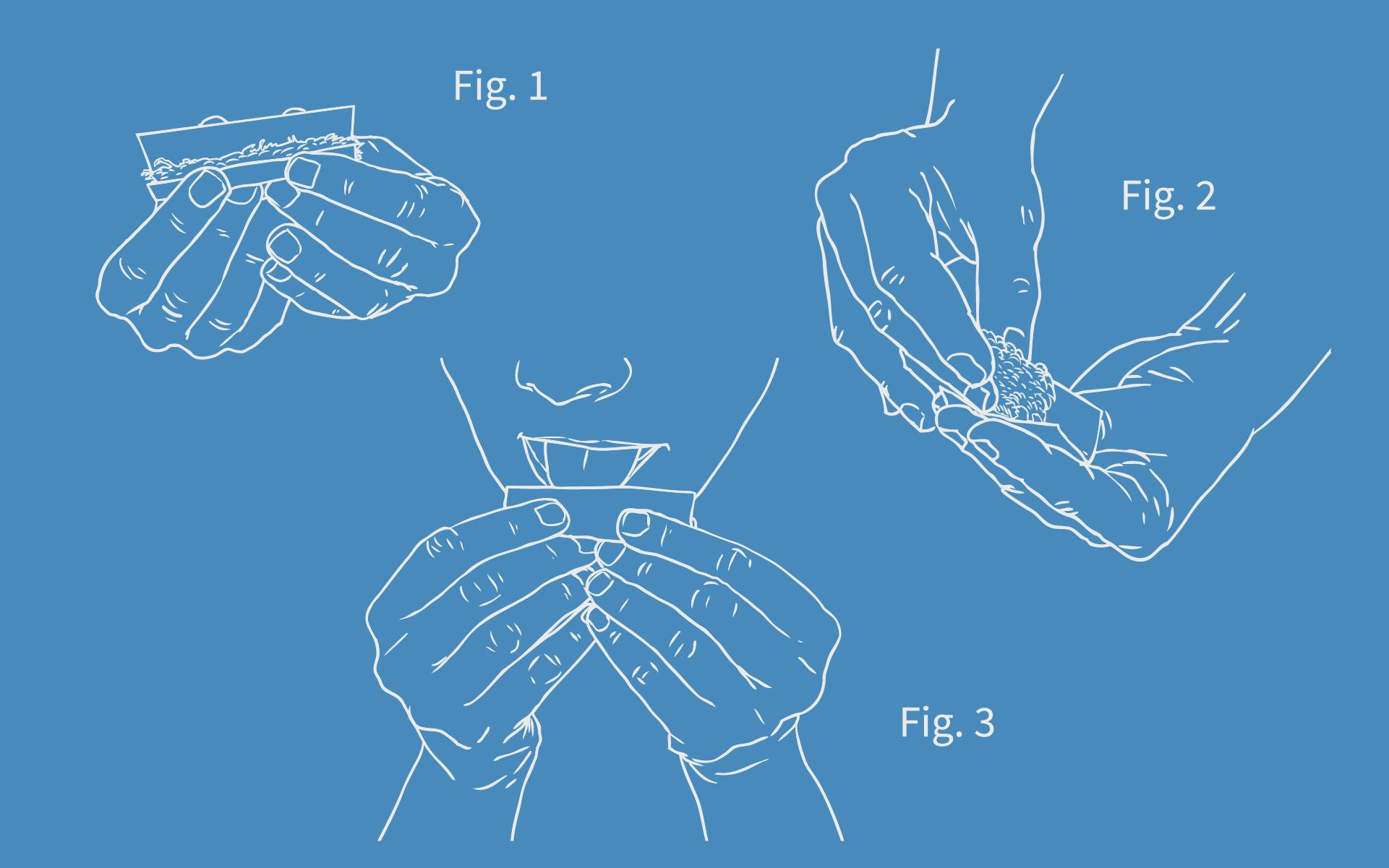As the high-CBD strain that won over skeptics and helped change the national conversation around medical marijuana, Charlotte’s Web may be one of the most famous cannabis strains in the world.
Now the strain’s creators have another claim to fame: They hold the first US patent for a cultivar of hemp.
Patent documents describe CW2A as a hardy plant, resistant to cold and capable of producing up to 6.24%CBD and only 0.27% THC.
The company behind the famed strain, Charlotte’s Web (CWB) Holdings, operated by Colorado’s famous Stanley brothers, has secured what appears to be America’s first-ever patent for a hemp plant, previously unreported US Patent and Trademark Office filings show.
With CEO Joel Stanley as the listed inventor, Denver-based CWB Holdings, Inc., which went public last year, received a plant patent for a “a new and distinct hemp cultivar designated as ‘CW2A’” on July 2, 2019, according to filings. Patent documents describe CW2A as a hardy plant, resistant to cold and capable of producing up to 6.24%CBD and only 0.27% THC.
That’s below the 0.3% THC threshold that distinguishes “hemp” from the rest of cannabis under current federal law.
That designation means CW2A is legal to grow under the terms of the 2018 farm bill, signed into law by President Trump this past December. The strain seems an ideal source for hemp-derived CBD products that in recent years have appeared on merchants’ shelves across the country.
Representatives from CWB Holdings—the parent company for the Charlotte’s Web line of CBD products currently available in all 50 states—did not respond to several emails and telephone messages from Leafly News seeking comment over the past week.
But intellectual property attorneys, plant experts, and cannabis-industry marketing professionals interviewed for this article agreed that patent is a landmark move that could signal the intent for CWB Holdings, which went public last year, to seize a commanding share of the country’s burgeoning CBD market.
Despite CBD’s enormous footprint among entrepreneurs, investors, and the buying public, what the CBD world has lacked is a consistent, consumer-trusted brand that’s both familiar and available across the country. For the first to claim that mantle, the spoils could be enormous.
CBD products are available in upscale boutiques, unscrupulous bodegas, on Amazon, and everywhere in between. Americans may have spent as much as $2 billion on CBD products in 2018, according to a February analysis from investment bank Cowen Inc. Estimates vary wildly, but the bank guesses that the American CBD market may grow to $16 billion by 2025.
The patent issued to CWB Holdings is a plant patent, not a broader utility patent, and is thus good only for legal protection against a competitor growing the same cultivar from clone. Despite its narrow nature, it’s groundbreaking in that it’s the first and only plant patent for a hemp cultivar issued in the United States.
Shop highly rated dispensaries near you
Showing you dispensaries nearNow that the Stanleys have both a recognizable, and trademarked name as well as a patented product backing their brand, they appear better poised than most to climb to the top of the CBD world.
“It’s huge. It’s something tangible,” said Avis Bulbulyan, CEO of Los Angeles-based cannabis business development firm SIVA Enterprises and a member of the California Bureau of Cannabis Control’s Cannabis Advisory Committee, which advises regulators overseeing the country’s single biggest marijuana market.
Though the market is still only a few years young, “the hemp space is ridiculously saturated,” Bulbulyan said. “A lot of brands out there have catchy logos and catchy names, but the product inside is generic. There’s nothing proprietary about it.” With a patent, however, there is.
GWB’s claim to fame
The Charlotte in “Charlotte’s Web” is Charlotte Figi. Now 12 years old, Figi has Dravet syndrome, a severe form of childhood epilepsy that, as her family discovered through trial and error, is treatable with CBD, one of the dozens of cannabinoids created by the cannabis plant.
Botanically, both hemp and marijuana are classified as the same species, Cannabis sativa. The distinction is merely legal: Hemp is cannabis with 0.3% THC or less. Anything with more THC is “marijuana” and thus outlawed under the federal Controlled Substances Act.
Both Charlotte and CBD were catapulted to national attention in 2013 thanks in large part to Sanjay Gupta, the physician and CNN medical correspondent who featured them in his special episode, “Weed.”
Along for the ride were the Stanley brothers, seven Christian-raised Coloradans featuring pop-star good looks and projecting CW Network values—with an ever-so-slight outlaw twist owing to their roles running a cannabis business.
It was the Stanley brothers who developed the high-CBD strain of cannabis from which the oil that treated Charlotte’s seizures was derived—and who have since built on the resulting fame to grow what The New York Times in March called “one of the country’s leading CBD companies.”
CWB Holdings already claims to be the number one hemp-derived CBD brand by market share, with products sold in 8,000 retail locations and 675,000 pounds of hemp grown last year, per company figures.
The origins of the Stanley brothers’ Charlotte’s Web are murky at best—and more than a little contentious. The Stanleys’ version of the story is that they cross-bred cannabis with hemp plants to find something low-THC and high-CBD. But if you ask old-school CBD heads from the West Coast, you’ll hear that they jacked an existing CBD strain and called it their own. Whatever the source, there’s nothing uniquely special per se about Charlotte’s Web. Many other strains have lots of CBD and low THC.
The secret sauce behind the success of the Stanleys and Charlotte’s Web, industry observers say, is their keen branding and marketing acumen.
“The only thing that separates them from any other hemp company is the name of their strain,” said one observer, who asked not to be identified in order to speak freely without retaliation.
“In hemp farming, one of the challenges is to make sure your hemp doesn’t get hot. If it does, you’ve got a big, big problem on your hands.”
The most typical source material for CBD products in America are plants originally bred for hemp seeds, hempseed oil, or hemp fiber. These yield about 3% CBD by dry weight, said Martin Lee, the California-based cofounder and director of Project CBD, one of the country’s earliest CBD advocacy groups.
“You have to use a lot of plants to get your oils,” Lee added of most hemp-derived CBD products. To acquire so much raw material, some CBD producers may purchase hemp varietals intended for fiber rather than oil. That’s not a problem if your end product is rope or hempcrete construction blocks—but cannabis happens to be excellent at sucking toxins from soil. “That’s where you run into problems,” Lee added, “and that’s why so much of this stuff is not very good quality.”
Thus, a high-quality hemp plant producing twice as much CBD by dry weight—intended to be extracted into oil fit for human consumption, and hardy enough to be planted in a variety of environments—is a potential game-changer.
It seems evident the Stanley brothers have long had ambitious goals.
In 2017, the company was on the receiving end of a warning letter from the Food and Drug Administration, which informed Stanley Brothers Social Enterprises LLC, one of the family companies, that some of the claims made in marketing CW Hemp products under the Charlotte’s Web brand were illegal.
It’s not clear what came of the letter. The FDA did not respond to a request for comment from Leafly News on Wednesday.
CWB went public on the Canadian exchange last year, drawing investment from major bank Barclays and others. In the months leading up to the IPO, the Stanleys hired a former Coca-Cola marketing executive to join their management team.
“The moment the 2018 Farm Bill passed, I knew it was the moment to join Charlotte’s Web,” Eugenio Mendez, Charlotte’s Web’s now–chief growth officer, told the New York Times for a Stanley brothers profile published earlier this year.
The Stanleys may be the beneficiaries of good timing. In May 2018, months before the farm bill was signed, records show, the company filed for its CW2A patent.
Later that summer, in the months before the United Kingdom legalized medical cannabis (albeit under unworkable restrictions), Leafly News encountered Josh Stanley at the UK Parliament in London, at an event organized by the United Patients Alliance, the UK’s best-established patient advocacy group.
At that time, the Stanleys were exploring licensing their products for the European market, Josh Stanley said.
More patent filings could come to light soon. Utility patents, which cover seeds as well as complex chemical compositions, are not publicly available until 18 months after their filing date. If the company filed documents for both types of patents at the same time, that information wouldn’t yet be public.
“It’s quite possible they applied for a utility patent as well,” said Dale Hunt, a San Diego–based attorney and botanist who holds a PhD in biology.
“Since people think of hemp farming as a seed-based farming strategy, [plant patents aren’t] the best fit,” Hunt said. “But maybe if you want your genetics to be always exactly the same, then it’s worth going through the cloning process.”
If the Stanley brothers’ description of CW2A is correct, the plant “could make it potentially a lot easier to farm,” Hunt added. “In hemp farming, one of the challenges is to make sure your hemp doesn’t get hot [that is, above the 0.3% THC threshold]. If it does, you’ve got a big, big problem on your hands.”
“I’m just guessing,” he continued, “but that [stability] might be what makes this plant valuable.”
The power of a patent
Patent filings represent a controversial if poorly understood aspect of the cannabis industry.
Other companies have successfully applied for and received cannabis patents—but, except in rare circumstances, a company can’t use a patent to prevent a competitor from entering or occupying a segment of the market.
What a patented product can do is take over a market—so long as the buying public recognizes the patented item as the superior product and buys accordingly.
In an interview, patent attorney Andrew Merickel, who has a doctorate in neuroscience, compared the situation to a fruit company that’s developed a particularly good tangerine—one that’s environmentally friendly and resistant to pests but also peels easily, looks good on a produce shelf, and tastes delicious.
There’s nothing stopping other fruit companies from developing their own very good tangerine. But in the meantime, the original company’s patented tangerine may be good enough to seize enough of the market to shut out or scare away any competitors.
“That’s the value” of a patent, Merickel said. “It’s not preventing other people from developing their own strain that might have similar characteristics; it’s being able to protect this strain that you’ve developed with the characteristics you want that has an advantage in the marketplace.”
“They can’t get a patent that would make it so your own existing plant technology infringes, but they can get patented technology that makes it so you can’t compete with them unless you adopt their technology,” Hunt added.
A patent like this “is huge for branding purposes and huge for marketing purposes,” said SIVA’s Bulbuyan. “The implications of it are greater than the patent itself.”
“Companies are now going to look at this as a case study, and ask themselves, ‘How can we duplicate it? How can we take this to the next level?’” he said. As for the Stanleys, “I guarantee they have something else up their sleeves beyond this.”






